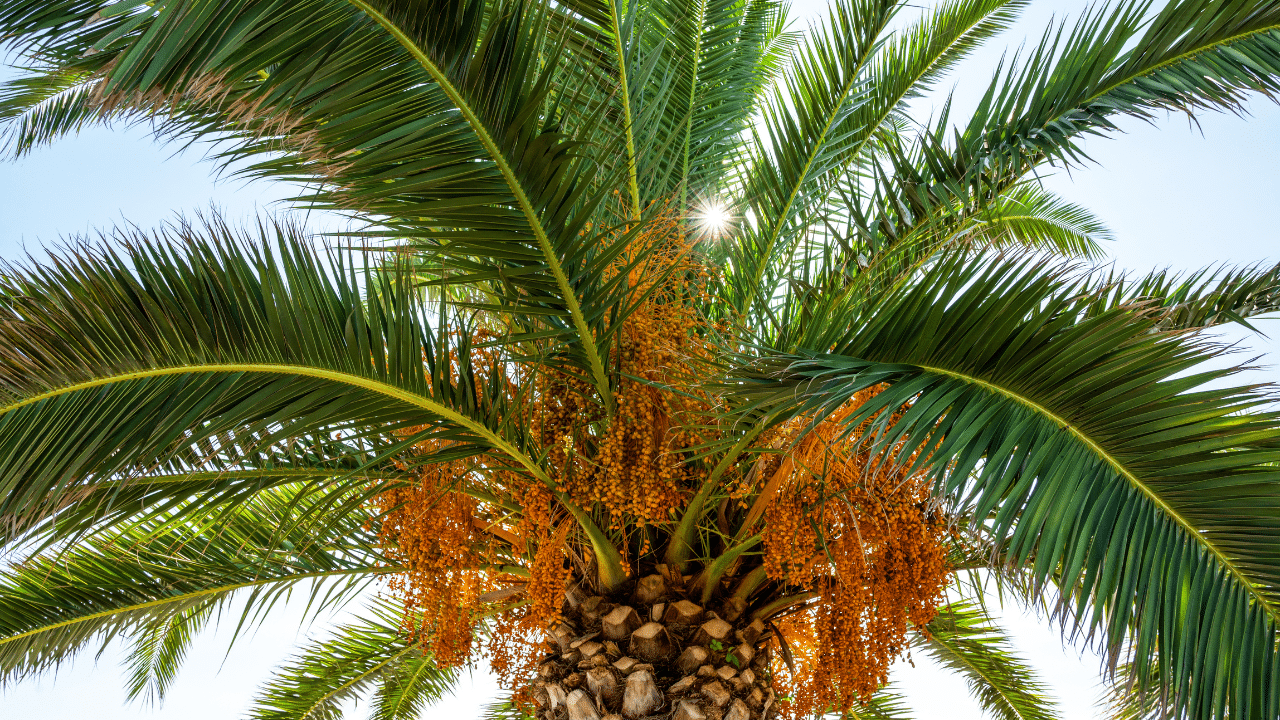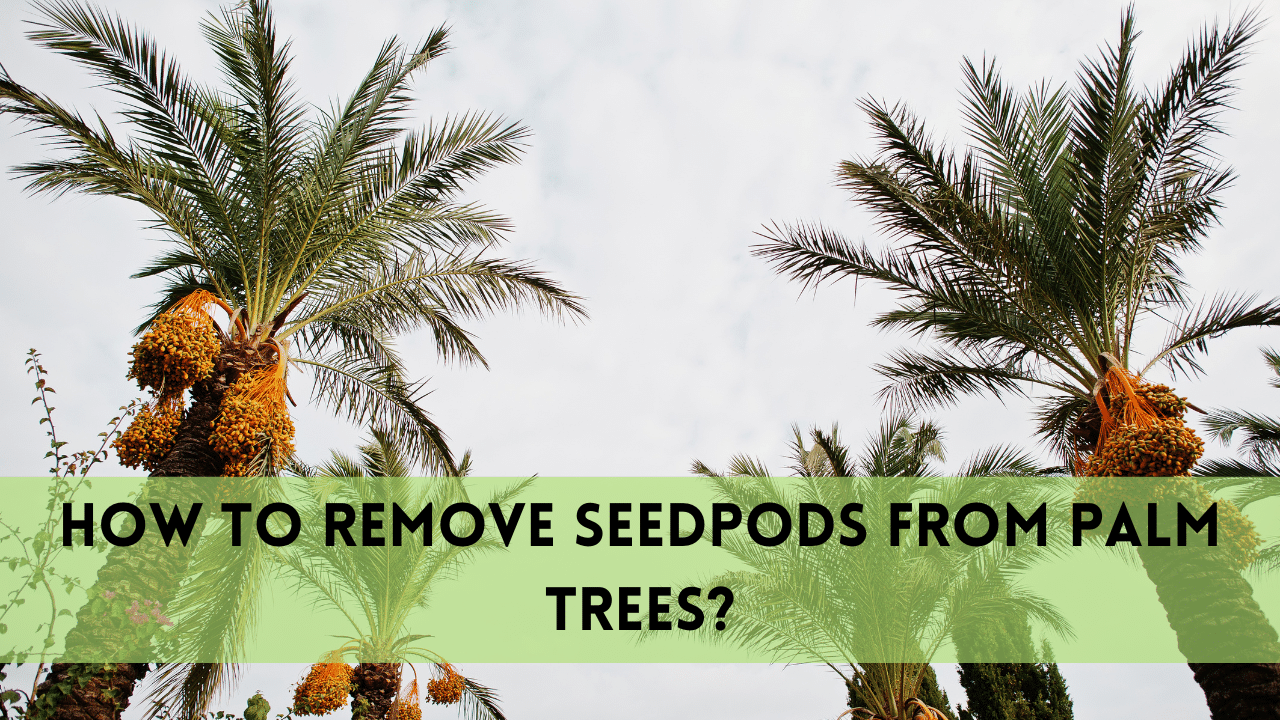Maintaining your palm trees’ health and appearance is critical for their safety and vitality. An important part of palms care is to remove seedpods from palm trees.
This article provides a detailed tutorial on how to remove seedpods from palm trees, ensuring their health and being visually beautiful.
It’s Important to Remove Seedpods from Palm Trees
It is important to remove seedpods from palm trees for various reasons.
Aesthetic Appeal: Seedpods can be unattractive, taking away from the attractiveness of the tree and surrounding scenery.
Tree Health: By using the tree’s energy for seedpods, we can redirect it toward healthy growth and development.
Safety: Mature seedpods can fall, endangering people, pets, and property below.
Pest Prevention: Seedpods can attract rodents and insects, causing damage to the tree and its surroundings.
Mess Prevention: Fallen seedpods can make a mess, complicating yard maintenance.
Understanding the Importance of Removing Seedpods
Palm trees make a beautiful addition to any environment, but their seedpods can be a nuisance. Seedpods can be ugly, causing messes and attracting pests. Furthermore, if left unchecked, they might deplete the tree’s energy, compromising its overall health.
Remove seedpods from palm trees not only for cosmetic purposes but also to promote tree growth and prevents potential risks.
Identifying Seedpods on Palm Trees
Before you remove seedpods from palm trees, you must identify them . Palm trees generate a variety of pods based on the species. Generally, seedpods are clusters of seeds coated in a hard shell that hangs from the tree. They range in size, colour, and texture. Here are some common palm tree species and their seedpod traits:
Different varieties of palm trees generate different types of seedpods. Understanding these variations will allow you to customise your removal strategy properly.
Various Species of Palm Trees and Their Seedpods Are Common
Syagrus romanzoffiana, sometimes known as the Queen Palm, bears long, hanging bunches of orange fruit. To avoid a messy cleaning, remove the huge seedpods before they ripen.
The Canary Island Date Palm (Phoenix canariensis) produces huge clusters of orange-brown seed pods. The pods are dense and heavy; therefore, early removal is vital to avoid harm from falling pods.
Fan palms (Washingtonia filifera) have tiny seed pods that are black or dark brown. Maintaining these prolific seedpods frequently can prevent them from overwhelming the tree.
Royal palms (Roystonea regia) have green seed pods that turn brown as they develop. These seedpods can be enormous, so remove them while they are still green and simpler to handle.
When to Remove Seedpods from Palm Trees
Timing is key in the elimination procedure. Remove seedpods from palm trees when they are young and green, as they are easier to manage. If left to mature, they become difficult to cut and may disperse seeds, resulting in unwanted seedlings.
Seasonal Considerations
The optimal time to remove seedpods from palm trees is late spring to early summer. During this period, the seedpods remain partially developed, which facilitates their transportation. However, you must examine the individual type of your palm tree, as different species may have different best seasons for pod removal.
Tools Needed to Remove Seedpods from Palm Trees
Using the proper instruments guarantees a safe and effective removal operation. Essential tools include:
We use pruning shears to trim tiny to medium-sized seedpods.
Pole pruners are ideal for reaching higher pods.
For tall trees, a ladder is required.
Protective gear includes gloves, goggles, and a hard hat.
How to Remove Seedpods from Palm Trees
A Step-By-Step Guide to Remove Seedpods from Palm Trees
Safety First
Before you begin, make sure you have the necessary protection gear. Safety should always be your first consideration. Wear gloves to protect your hands from sharp edges and other irritants. Goggles will shield your eyes from debris, and a hard hat is required if you are working with towering trees.
Inspect the tree
To identify all of the seedpods, thoroughly examine the tree. Take note of their location and height. This will allow for an effective plan for the removal process.
Set up your equipment
If the pods are too high, secure your ladder. Place it on sturdy ground, and have someone hold it for extra stability. Prepare your pruning shears and pole pruners, making sure they’re sharp and in good shape.
Prune the seed pods
Begin by removing the lower pods with your pruning shears. Make a clean cut near the bottom of the pod stem. To prune higher pods, use pole pruners. Extend the pole pruner to the desired length and carefully slice the pods. Be cautious of falling debris and verify that the area below is free of bystanders.
Dispose of seed pods
Gather the cut seed pods and dispose of them carefully. Avoid leaving them on the ground since they might attract pests and cause a mess. Composting is an environmentally friendly solution, or you can dispose of it by municipal waste management regulations.

Post-Removal Palm Tree Care
The palm tree needs proper care after removing the seed pods to recover and flourish. Here are a few tips:
Watering: Trees must get enough water, especially during the dry months. Proper hydration promotes recovery.
Fertilisation: Use a balanced palm fertilizer to supply the necessary nutrients. This helps to keep palm tree healthy and encourages new development.
Pruning Maintenance: Regularly inspect the tree for new seed pods and dead fronds. Consistent upkeep avoids overgrowth and keeps the tree in top condition.
Common Mistakes to Avoid
Improper timing
To remove seedpods from palm trees at the incorrect time can impose undue stress on the tree. Always remove them during the recommended timeframe for your palm species.
Use dull tools
Dull tools can harm the tree and make the task more difficult. Keep your pruning shears and pole pruners sharp and well-maintained.
Disregarding Safety
Ignoring safety procedures can result in accidents. Always wear protective equipment and secure your ladder correctly.
Incomplete Removal
Leaving portions of the seed pod stem connected to the tree could lead to decay and disease. Clean incisions should be made close to the stem’s base.
FAQs
Can I remove seedpods from palm trees myself, or do I need to contact a professional?
Various factors determine whether you should hire a professional or attempt to extract seed pods yourself.
If the palm tree is particularly tall, it may be safer to engage a professional with the necessary equipment.
Professional services may be more efficient for a large number of palm trees.
If you have the right tools and experience, you can manage small to medium-sized trees on your own.
A trained arborist should handle any situation where safety is a concern, such as dealing with towering trees or heavy seed pods.
When should I remove seedpods from palm tree?
Seed pods are best removed while still green and young, before they stiffen and dry up. This stage usually occurs in the late spring or early summer. Regularly checking your palm trees for new growth can help you choose the best time to remove them.
Is it safe to remove seedpods from palm trees?
When done appropriately, removing seedpods does not harm your palm tree. To avoid causing injury to the tree, use sharp, clean equipment and cut precisely. Furthermore, removing seedpods while they are still green can lessen stress on the tree and prevent future damage.
How often should you remove seedpods from palm trees ?
Evaluate your trees twice a year, once in late spring and then in early fall. This allows you to catch any fresh seedpods early and keeps your palm trees in good condition.
Conclusion
To effectively remove seedpods from palm trees is an important aspect of tree care that improves their health, safety, and attractiveness. By following the principles in this detailed guide, you can learn how to remove seedpods from palm trees and keep them looking lovely while ensuring their safety.
Regular maintenance, adequate instruments, and proper techniques are essential to successfully remove seedpods from palm trees. For intricate or large-scale jobs, don’t be afraid to seek professional help to secure the finest results for your palm trees.

